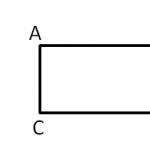Tulle is an important element in window decoration. Using your imagination and a little skill, you can sew an original curtain. Next, let's look at instructions on how to sew incomparable tulle at home with your own hands. In addition, you can produce a unique thing.
Procedure
It is important to consider the color of the fabric so that the curtain matches the interior of the room perfectly.

We start by taking measurements: adding the total number of lateral distances to the width of the window. The resulting amount is doubled to form beautiful folds. By measuring the gap from the floor to the curtain, we find out the length of the product. Don't forget to leave about three centimeters for allowance. Lay the fabric out on the floor and start cutting:
- cut off the excess edge;
- bend and sew the marked allowances;
- Sew a ribbon along the top edge.
- The product is ready.

Curtains for the kitchen
- feature of the selected model;
- color scheme of the kitchen interior;
- window size;
- housewife's preferences.









There is no need to hang curtains in such a room. Tulle in the kitchen can be an independent accessory. The fabric is selected to suit the intended model. It can be openwork organza or thicker chiffon. Non-standard approaches involve something like a grid.

Tulle made from straight stripes is very popular today. The fine linen weave piece looks modest and dreamy.

In small rooms, it is advisable to design a design slightly longer than the window sill. Such curtains will not interfere with movement and are easy to care for. To maintain a perfect look, a trim or decorative border is sewn along the lower edge of the tulle. A long curtain looks impressive, but in larger rooms.

The most convenient tulle model is considered to be an arch. Making this tulle is easy. Sewing is no different from the considered option. The only difference is in the cutting of the fabric: we cut out a symmetrical pattern, apply it to the bottom of the fabric and cut it out.

Curtain models
For children's apartments, it is worth choosing a curtain fabric in light colors. The perfect option is a one-color curtain decorated with images of characters. The multifunctional color of tulle is white, but you can also choose a shade of beige or cream.









Choose the style to suit your taste. Use applique, decorate with beads, add a fancy lambrequin. If the room is for a girl, then feel free to use ruffles and bows. If this is a boy’s room, then abstract figures, cosmic bodies, and images of cars are more appropriate. By decorating the curtain with appliqués from cartoon series, any child will be delighted with the room.

A wonderful place where all the guests in the house gather must be perfect. Light, transparent fabrics are suitable for such a room. Straight curtains look great in their natural form, in warm colors. It doesn’t have to be an ordinary hanging fabric; it can be decorated with tasteful accessories.

Sewing elegant tulle for the living room is just as easy. The matter of improving curtains in a room of this kind must be treated with attention. The room should look luxurious and elegant. That is why it is necessary to decorate the curtains yourself so as not to go overboard with accessories.

You can use crystals, tassels or picturesque pendants to decorate plain curtains. Graceful flowers, made independently from a smooth ribbon or from pieces of leftover tulle fabric, are suitable as an element for drapery.









Decorated pendants will be molded favorably, giving a special ambiance. Don't be afraid to create your own individual style, highlighting your uniqueness.

Using fabric scraps
After cutting the curtains, there will definitely be pieces of fabric left. A little imagination and a piece can turn into stunning decor: flower-shaped decoration, curtain clip, prints, bows, lambrequins. The tulle from the remaining strips of fabric will not only be interesting, but also unique. After all, the product must be assembled from pieces of material, generating a unique curtain pattern.

Using leftover tulle fabric you can create many incredible projects. In most cases, housewives choose flowers. The image of a tulle rose is immediately created.









To form this element you will need: a strip of fabric 25 by 10 cm, a needle, thread and beads. We fold the fabric into equal halves widthwise. We wind the tape around the rod so that the next turn is slightly higher than the previous one. At the end we leave a length of 7 cm.


Then we take a thread by color and sew all the resulting layers in the center of the resulting structure. We decorate the middle of the rose with a bead. On the Internet you will find many photographs of unique tulle decorated with flowers.

The latest trend in the design world is to combine opposing styles. The article gives a short master class on how to sew classic tulle. There is no need to follow established rules - they often offer dull variations. It is better to use maximum improvisation and ability when sewing curtains from light fabric.

DIY tulle photo












The kitchen is a special place in the apartment. This is not just a room for eating. This is a place where the family gets together, discusses pressing problems, shares successes and failures. Therefore, an appropriate aura is simply necessary here. Curtains are one of the surest ways to create it.
It is convenient to use two pairs of window curtains: curtains - made of heavier and dense fabric, as well as tulle - a light, airy material that gives special romance and inspiration.
There can be several sets of curtains: a warm tone will warm them in a winter blizzard, and a cold tone in the summer will give them freshness, visual coolness and lightness. In late autumn, curtains should not steal the already short daylight hours - you can even limit yourself to tulle. Hot May days can be softened by thick curtain material that repels the heat.
Fabric selection
What material should it be made from?
The choice of fabric should be based on several criteria:
- Seasonal purpose of the kit;
- Features of the chosen style;
- The color scheme of the kitchen furnishings;
- Window size;
- Kitchen heights;
- Housewife's tastes.
Tulle for the kitchen can be made of transparent organza or thicker chiffon. Original approaches include something like a mesh or nylon elements. require frequent washing, so they should not have many folds or draperies. Viscose has proven itself well: unpretentious, pliable and soft. However, it is not durable, fades in the sun and stretches with frequent washing.
Before taking measurements, it is important to determine whether the selected fabric will shrink after washing and ironing (steaming). To do this, you can wash a piece of this fabric in hot water followed by steaming.
When the preparations are completed, you can start taking measurements. The width of the product should be provided with a margin for gathers and folds; I increase the size by half or one third (depending on the density of the material). Stretch tulle is not suitable for the kitchen; it is strict and uncomfortable.
After drawing up a life-size diagram of the curtain on paper, it is cut out. When drawing up a pattern, seam allowances are not provided, but allowances may be included for the curtain to hang freely.
The pattern is copied onto the fabric carefully, avoiding displacement. To copy symmetrical areas, the fabric is folded in half with the right side inward. This is where allowances for seams and facings are marked (if necessary).
When choosing a model of two halves, you must not forget that, in the case of using fabric with a pattern, select the symmetry of the pattern on the adjacent halves. In this case, you can sew the curtains correctly by slightly moving one half relative to the other.
The design of the curtain edges should begin with the side seams. To make the hem neater, you can first fold the edge to the remaining width of the seam allowance. For this purpose, a non-hot iron, ruler or edge of the table will be useful. After this, it is better not to waste time and mark it - for the accuracy of the hem. And only after that you can work on the machine.
To sew tulle for the kitchen neatly, the upper and lower edges need to be folded more than the side ones, since the upper edge bears the load in the form of a tape for attaching the cornice, and the lower edge bears the load. The lower edge of the curtain can also be made heavier using braid, border, fringe, and additional decorations.
httpv://youtu.be/K9X4rXuu9Gw
For rounded curtain rods, curtains have recently been provided with loops made from the same fabric as the curtains. In this case, they are cut out from cut pieces of fabric 10-15 cm wide (for double folding) and 15-20 cm long (depending on the height of the cornice attachment above the window opening). Fabric loops are attached inside the facing or decorated with a separate seam made in an artistic way.
If tulle curtains provide edging around the perimeter of the product, it is decorated last, hiding the ends of the seams, overcasting knots and seam edges inside it.
Curtains for the kitchen are a manifestation of the hostess’s character, the desire to create a zone of comfort, coziness and mutually pleasant communication.
The window opening in the room is usually decorated with tulle. It should go well with the room wherever it is hung: in the kitchen, in the living room, above the balcony, in the bedroom, above the door. Today you can choose whatever tulle you want. Many housewives sew curtains with their own hands and they fit harmoniously into any interior. To ensure that the product really decorates the room, you can use tips on sewing it, and the video presented in the article will clearly demonstrate this.
Types of tulle fabric
Every housewife knows that tulle is a light translucent fabric. It is made from cotton, silk, nylon, synthetic fibers, etc. Tulle without a pattern is made from two types of thread, and patterned fabric is made from with the addition of various laces. Any interior that is complemented with this fabric is instantly transformed, becoming light and airy. Such a product can hide uneven walls or imperfections in a window frame, giving the composition an extraordinary charm.
There are two types of tulle:
- with patterns;
- with smooth fabric.
Fabric with patterns is also divided into the following types: veil, organza, muslin, mesh.
Master class on fabric selection
 To answer the question of how to sew tulle with your own hands, you need to decide on the choice of material. Before purchasing it, you need to consider the design of the kitchen. For example, if the room is designed in a high-tech style, fabric with flowers or a baroque pattern will create disharmony. If you need to choose something universal, then a tulle veil will do. The advantage of such matter is that it The folds look very nice. It is also very important to choose the right color. It is desirable that it corresponds to some significant detail of the room. If the original color was selected, you need to make sure that it will fit well.
To answer the question of how to sew tulle with your own hands, you need to decide on the choice of material. Before purchasing it, you need to consider the design of the kitchen. For example, if the room is designed in a high-tech style, fabric with flowers or a baroque pattern will create disharmony. If you need to choose something universal, then a tulle veil will do. The advantage of such matter is that it The folds look very nice. It is also very important to choose the right color. It is desirable that it corresponds to some significant detail of the room. If the original color was selected, you need to make sure that it will fit well.
In addition, the material should be practical, since the tulle will hang in the kitchen where food is prepared. If the window is located next to the stove, then you need to carefully choose the fabric and color. The selected white color will require frequent washing. The best option in this case is tulle in the form of a mesh.
Required Tools
To sew tulle with your own hands, you will need the following tools and materials:
- textile;
- sewing machine;
- scissors;
- needles;
- curtain tape;
- threads;
- tailor's meter;
- metal ruler.
Master class on sewing tulle with your own hands
After the fabric has been selected and the color has been determined, we begin sewing it. Master classes of this process are presented in the video in this article.
Tulle for the kitchen with a balcony door
 Before you start sewing the fabric, you should determine its length and width. For this purpose, measure the width of the window opening and add to it the sum of the lateral distances of the opening. The resulting figure is multiplied by two. This allows you to create light folds, without which the fabric will be unnaturally stretched.
Before you start sewing the fabric, you should determine its length and width. For this purpose, measure the width of the window opening and add to it the sum of the lateral distances of the opening. The resulting figure is multiplied by two. This allows you to create light folds, without which the fabric will be unnaturally stretched.
Measurements are made with a soft meter or metal ruler. The length is measured from the cornice to the floor, where the lower border of the product should pass. An allowance of 3 cm is left for the seams. The fabric is laid out on the floor, measured and cut, and the excess fabric is trimmed. The allowances are folded and the fabric is carefully stitched. The seam should be small, since the fabric is thin. The seams must be the same size. After this, a ribbon for the curtain is sewn from the inside to the upper edge of the fabric. Indicative stripes for the seam should be marked on it. So, the product is ready!
Sewing tulle on eyelets
 How to sew tulle on eyelets with your own hands? The initial work is carried out in the same way as when sewing tulle on ribbons for curtains. If the product is straight, then no pattern needed. Dimensions are applied to the fabric. If the material is very thin, then the seam allowances should be large. An adhesive fabric or non-woven fabric is glued to the upper edge of the product from the wrong side with a hot iron. To avoid burning delicate fabric, use an ironing iron.
How to sew tulle on eyelets with your own hands? The initial work is carried out in the same way as when sewing tulle on ribbons for curtains. If the product is straight, then no pattern needed. Dimensions are applied to the fabric. If the material is very thin, then the seam allowances should be large. An adhesive fabric or non-woven fabric is glued to the upper edge of the product from the wrong side with a hot iron. To avoid burning delicate fabric, use an ironing iron.
The side seam allowances are folded in half to the wrong side. The edge is swept and ironed. The top edge is processed in the same way. After stitching, the fabric is laid out on the floor. Then they begin to mark the eyelets. The upper half of the element is placed on the fabric so that the mark coincides with the center of the ring hole. Trace the inner and outer diameters of the ring.
Cut out the inner circle. A sleeve is inserted from the wrong side of the material, which is covered with the outer part, and the edge of the fabric and thread are tucked inside the ring. The halves are squeezed tightly until they click. The curtain rod is threaded through the rings and the tulle is hung in its place.
Sewing a tulle arch with your own hands
The tulle arch is considered very popular, sewing it in the same way as the previous options. The main difference is that the bottom does not have to be even, and when cutting the fabric, a geometrically accurate arch pattern is used. For this purpose, you can use a symmetrical template according to which the arch is cut out. This product looks good in small kitchens.
To sew a product correctly, you need adhere to the following important rules:
- the threads used to sew tulle must be the same color as the fabric, or differ by one tone;
- with a lambrequin it is best to use it for the living room; you can hang it above a dismantled door, but in this case the opening must be large;
- Choosing tulle for the kitchen is not so easy, since the design of the room must be in harmony with the product, so in this case it is recommended to sew it yourself;
- the tulle that is hung over the balcony should not be long.
Product care
Caring for tulle is easy. It is recommended to wash it before soak for 2 hours in warm water with diluted washing powder. If yellow spots appear on the fabric, add three tablespoons of salt, after which the product is lifted and lowered several times in the soap foam. Then rinse thoroughly in cold water. Bleaching is prohibited. The tulle is not ironed, but dried directly on the window, hanging it wet.
Thus, sewing tulle with your own hands is quite simple. The main thing is choose the right fabric. Creating such a unique product significantly transforms the room for the better. To create such beauty, you need some skills, perseverance and desire. Thanks to the video presented in the article, you can understand some of the nuances of sewing tulle.
Not the last role. It is not only an important decorative element, but also performs a number of practical functions - it protects the room from the scorching sun and the ingress of dust or fluff, protects furnishings from fading, serves as a barrier to insects and prevents the penetration of prying eyes without reducing the level of natural light. Despite the fact that the choice is large, choosing an option that meets all the requirements of a particular room and the tastes of the owners is not so easy. At the same time, sewing tulle with your own hands will not take much time and will allow you to create a curtain that is ideal in design, size and density.
Material selection
Having decided on the design and taking the necessary measurements, you can begin to select the appropriate fabric.
In this case, it is necessary to take into account the following material characteristics:
- Degree of transparency (transparent, translucent or opaque).
- Surface structure (flat or with .
- Color (selected taking into account the color of curtains and other interior items).
- Availability and type of pattern (fabric with a symmetrical geometric pattern, plant motifs or other options).
To make tulle we use:

Depending on the chosen design, you can combine several types of fabric of different colors and densities, including for making lambrequins and frills, and for additional finishing you can use trim (ribbon for edging), satin ribbon, pendants and other decorative details.
Cutting and preparing fabric
When preparing and cutting fabric, you need to consider the method of attaching the fabric to the cornice. For these purposes the following can be used:
- (braid) is purchased ready-made and guarantees uniform distribution of folds across the entire width of the fabric. For heavy fabric, choose a wider curtain tape.
- The loops are sewn on independently; for convenience, they can be equipped with Velcro or buttons.
- for attaching tulle and at the same time can perform a decorative function. For their manufacture, fabric can be used that is harmonious in color with other items of kitchen textiles - tablecloths, towels or curtains.
- Eyelets are metal or plastic rings bordering the edges of the holes for threading the cornice rod.

Sewing: procedure
Work on sewing the simplest version of tulle is carried out in the following sequence:
- The side edges of the fabric are folded 1-2 cm and stitched on a sewing machine. It is important to maintain an equal width along the entire length of the fabric, and to avoid distortions and uneven seams while working, keep the fabric slightly taut. If desired, the side seams are decorated with trim. It is important to use the same color thread as the tulle.
- A curtain tape is sewn to the top edge. A ribbon up to 5 cm wide is sewn with two lines, but if the width is more than 5 cm, a third line is added in the center of the ribbon.
- The curtain tape is pulled to the required length, the excess parts of the tape are cut off.
- If necessary, a weight cord is sewn to the bottom edge.
- to the cornice.
Kitchens made in the shape of an arch look original. Sewing tulle of this shape is generally similar to the process described above, and it is recommended to use a cardboard template to cut out a semicircular arch. When combined with a lambrequin, such a product is suitable not only for decorating a window, but also for decorating a wide doorway.
Sewing tulle with your own hands is not very difficult; in addition, there are many ways to give the finished product additional originality. You can decorate tulle with your own hands as follows:

httpv://youtu.be/trLGqP39RaI
- You can place a lambrequin along the top edge, which will give the product a finished look. The fabric for the lambrequin is selected taking into account the overall color scheme of the room and should be in harmony with both the tulle and curtains, and the rest of the furnishings.
Textile decor is the final touch of interior design, and an important one. It is important to choose curtains, drapes or drapes correctly so that the final touch does not ruin all the efforts in decorating the room. By the way, proper window design can help hide minor flaws in interior design and solve architectural problems of spatial composition.
Curtains, in addition to being decorative, have a significant utilitarian purpose: protective and security. Curtains protect the room from the bright sun and protect from prying eyes. Despite the importance of this interior detail, it is not at all difficult to do it yourself. How to sew tulle with your own hands from organza or veil: video tutorials will help you cope with the task.
Light curtains made of tulle, organza or veil can act as an addition to thick curtains. If the protective and security functions of curtains are not so important - the window does not face the sunny side, prying eyes will not interfere, beautiful tulle can be used as an independent product.

Choosing a model
The first thing you need to do when starting to create clothes for the window with your own hands is to decide on a style. The decorative design of the window is closely related to the overall design style of the room. Models with draperies are perfect for interior design in a classic style. If you sew curtains from tulle that imitate fillet knitting or lace, they will emphasize the rustic style.

In modern interiors it is better to sew organza tulle with a metallic sheen. In addition to style, the purpose of the room matters when choosing a curtain model. You should not sew lush curtains for the kitchen. Often there is not enough space in the kitchen, and the abundance of folds on the curtains can be both non-functional - they quickly get dirty, lose their appearance, and a fire hazard, especially if the stove is located next to the window.
A good choice for the kitchen would be “cafe” type curtains, or, as they are also called, “drawrs”. Look at the photo how such curtains create a cozy mood in the kitchen. Thick, lace tulle is well suited for making. When decorating a window in “grandmother’s style”, watch how to sew tulle in the video.

How to choose fabric
For light curtains, light, transparent ones are used: tulle, organza, veil. Let's understand the terms.
- Tulle is a mesh fabric, smooth or patterned, made from silk, cotton or synthetic threads.
- Organza is a rigid, translucent fabric. Produced from polyester, silk, viscose. It can be smooth or with a pattern applied using printing, etching or embroidery.
- Voile is also a translucent fabric, but unlike organza, it is soft and flowing.

Both veil and organza are suitable for creating draperies or folds, but when buying material, pay attention to how the draperies behave differently: organza folds have a rigid shape, while veil folds lie softly.
When choosing curtains, you can go in two ways: choose a style of curtains and buy curtain fabric according to your idea, or go to the store and make a choice from the fabric you like. Whichever of the two methods you choose, there are several rules for selecting curtains for the interior.
- The fabric for curtains is selected to match the wall decoration, and the choice of tulle is no exception.
- If you have chosen beautiful tulle as an independent option for decorating a window, then perhaps you should opt for a more active pattern or color.
- White color is the most classic option, which can easily fit into a room with any decoration. If you are a fan of the classics or find it difficult to choose a color, opt for shades of white.
- When choosing curtain material, do not forget that you will see the fabric on the window “through the light” - be sure to estimate how the material looks with a light source.

If, when choosing a curtain model, you opted for lush draperies, the material should not have an active, large pattern. Decorative folds look better on a smooth surface. An excellent choice in this case is organza or veil. There are types of organza on sale with a “chameleon” coloring - the color changes depending on the viewing angle. Curtains with lush folds made of such fabric demonstrate a richness of shades.

It's easy to sew curtains with your own hands
Even for a novice dressmaker, sewing tulle beautifully is not difficult. The main thing that is required is accuracy. Simple tulle curtains can be sewn even without a sewing machine. The photo shows how to sew tulle for the kitchen. Curtain fabric is most often sold in a width of three meters. The design on the fabric for curtains is a coupon pattern, its location is across the width of the roll. Tulle for curtains very often has a decorative border in the form of scallops.
This finish will not require additional processing - hemming the bottom. Therefore, if you decide to sew curtains from tulle, and do not have enough experience, start by sewing from such fabric. When buying material for sewing curtains, you need to take into account the width of the window and the reserve for draperies. Before going to the store, measure the width of the cornice, add to the resulting size the allowance for drapery. If you are planning lush folds, the width of the cornice should be multiplied by two.

If you have chosen small, light folds, then half the size of the cornice will be enough to form the folds. Store salespeople will help you correctly calculate the length of the cut. In a fabric store, it is advisable to buy ready-made curtain tape - a special braid that sets the rhythm of the folds. Using tape, you will achieve evenly spaced pleats in one easy motion - pulling on the lace.
The store has samples of draperies made using different types of curtain tape. Before purchasing fabric, choose the type of curtain tape, and the amount of drape required will depend on the drape the tape creates.
If you have any questions, you can additionally watch how to sew tulle with your own hands in the video. Using the instructions, you can easily cope with the task of sewing simple curtains.

















